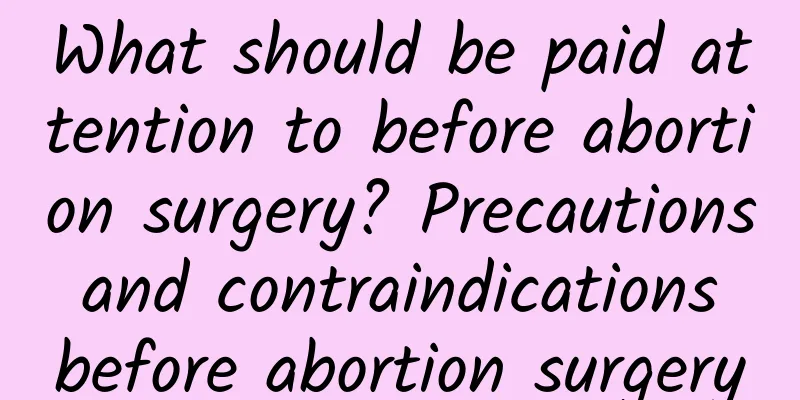Introduction to threatened abortion

|
In the early stages of pregnancy, every expectant mother is more worried about threatened abortion. This worry is understandable. There are many clinical causes of threatened abortion. In order to prevent threatened abortion, expectant mothers must pay attention to observe their physical condition, develop regular living habits, and try to avoid excessive fear, sadness, anger, etc. Below I will give you some relevant introduction to threatened abortion. Threatened abortion refers to a small amount of vaginal bleeding before 28 weeks of pregnancy, followed by paroxysmal lower abdominal pain or back pain. Pelvic examination shows that the cervix is not dilated, the fetal membranes are intact, no pregnancy products are discharged, and the size of the uterus is consistent with the gestational age. If the symptoms worsen, it may develop into inevitable abortion. Pregnancy that ends before 28 weeks is called abortion. If it ends naturally before 12 weeks of pregnancy, it is called early abortion, and if it ends naturally between 13 and 27 weeks of pregnancy, it is called late abortion. According to statistics from different regions, different classes and different ages, the incidence of spontaneous abortion is 15%-40%, about 75% occurs before 16 weeks of pregnancy, and the former accounts for 62% at 12 weeks of pregnancy. Abortion goes through a series of processes from the beginning to the end. According to its different stages, it can be given different diagnostic names, namely threatened abortion, inevitable abortion, incomplete abortion, complete abortion, and overdue abortion. Threatened abortion is mainly manifested by a small amount of vaginal bleeding after menopause, although the pregnancy reaction is positive, and may be accompanied by lower abdominal pain and a feeling of falling, etc. There are many reasons for threatened abortion, such as abnormal fertilized eggs, endocrine disorders, placental dysfunction, blood type incompatibility, maternal systemic diseases, excessive mental stimulation, reproductive organ malformations and inflammation, trauma, etc., all of which can lead to threatened abortion. Whether a threatened miscarriage will result in miscarriage often depends on whether the embryo is abnormal. If the embryo is normal, after rest and treatment, the cause of the miscarriage is eliminated, the bleeding stops, and the pregnancy can continue. However, most miscarriages are caused by abnormal embryos, so miscarriage will eventually occur. We all know a lot about threatened abortion. There are many factors that can cause it. The uterus is more sensitive in the first three months of pregnancy, and sometimes there is slight lower abdominal pain, but this is not threatened abortion. In this case, you should pay attention to rest and go to the hospital in time to see a doctor for diagnosis and treatment to preserve the fetus. |
<<: Various methods of detecting threatened abortion
>>: What is threatened miscarriage?
Recommend
Do you know the symptoms of chronic adnexitis?
Chronic adnexitis is a common gynecological disea...
What foods are good for patients with cervical warts?
How should patients with cervical warts eat? Cerv...
What are the differences between painless abortion and ordinary abortion?
Many female friends who are having an abortion fo...
What are the signs and symptoms of pelvic inflammatory disease?
What are the signs and symptoms of pelvic inflamm...
How much does congenital absence of vagina cost?
For patients with high-risk STDs, the cost of tre...
Exercise your core muscles to slim your abdomen and create abdominal lines
[Key Points]: Stretching focuses on exercising th...
What are the differential diagnoses for adnexitis?
Adnexitis is a female disease, and adnexitis is a...
What if I have brown discharge during my period?
What's wrong with brown discharge during the ...
What preparations do you need to make before a curettage? How long does a curettage take?
The main purpose of curettage is to further remov...
Walking to help burn fat: 4 NG postures to avoid
If you want to lose weight healthily, in addition...
Could pelvic effusion be cervical adhesion?
Could pelvic effusion be cervical adhesion? In li...
How to regulate menstruation
Missed periods are not uncommon among women, but ...
What are the symptoms of menopause?
What are the pathological symptoms of pathologica...
What to do with acute pelvic inflammatory disease?
What to do with acute pelvic inflammatory disease...
Is the right ovarian cyst serious? What are the dangers?
If the right ovarian cyst causes persistent pain,...









